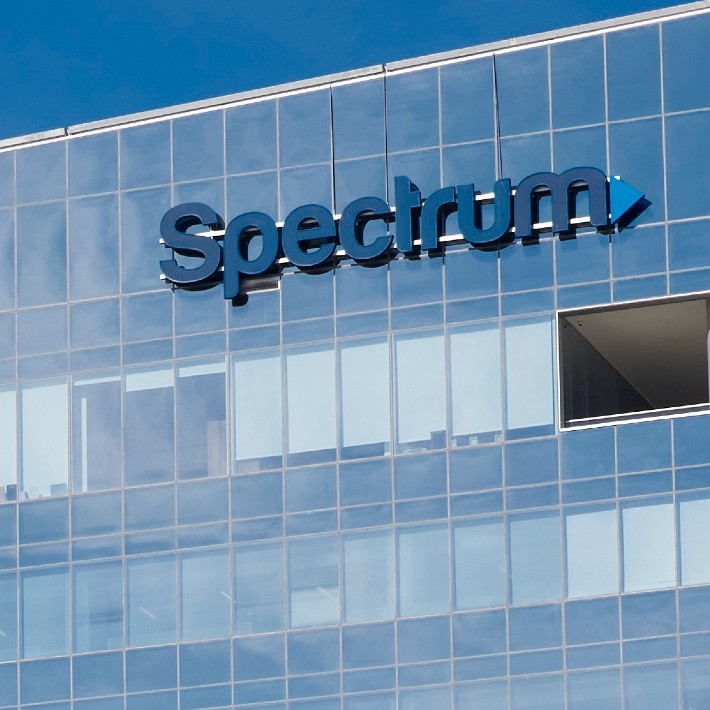Charter will deploy CBRS widely, but it's in no rush
Charter's MVNO deal and partnership with Verizon is so good 'they've actually reduced some of the incentive to go hard and fast' with CBRS, says CEO Chris Winfrey.

Charter Communications will eventually deploy its CBRS spectrum broadly, but the operator's MVNO deal with Verizon is so attractive that Charter doesn't feel the need to deploy the spectrum rapidly, according to CEO Chris Winfrey.
"We'll deploy in every county where we acquired CBRS spectrum," Winfrey said Thursday at MoffettNathanson's Technology, Media, and Telecom Conference. "But we're not in a rush."
Figure 1:  (Source: Kristoffer Tripplaar/Alamy Stock Photo)
(Source: Kristoffer Tripplaar/Alamy Stock Photo)
Charter uses Verizon's network as part of a mobile virtual network operator, or MVNO, agreement. The deal is so good that "they've actually reduced some of the incentive to go hard and fast," Winfrey explained.
Charter was one of the big winners in the 2020 CBRS spectrum auction, coming away with more than 210 licenses for about $464.25 million. The operator is rolling out CBRS in one unnamed market and expects to use it as a blueprint for future deployments.
Like Comcast, which also is in no rush to deploy CBRS, Charter intends to apply the spectrum in high usage areas that can generate the highest return on investment.
'A mathematical decision'
"The extent and depth to which we deploy CBRS is really just going to be a mathematical decision on what's the return calculation," Winfrey said.
He declined to present a timeline for Charter's CBRS deployment but stressed that the operator will source CBRS gear from multiple companies. He also said Charter expects the bulk of its deployments to involve strand-mounted radios.
Meanwhile, Wi-Fi is handling the bulk of Charter's mobile offload to keep MVNO costs in check. The operator's offload of mobile traffic via its own Wi-Fi infrastructure in and out of the home has been around 85% for a while but has recently grown to 87%.
Winfrey also was asked if Charter would explore the use of additional spectrum, including any opportunities that could emerge if some of Dish Network's spectrum becomes available.
Winfrey allowed that Charter would be "opportunistic" regarding licensed spectrum but said he doesn't see any big near-term needs.
"We have all the [wireless] assets we need today to have a very successful business and meet all of the objectives in our business plans," he said. "That said, we are very interested in spectrum, generally."
And Winfrey said Charter is keen on shared licensed spectrum models, such as what is being used for CBRS. "We think there should be more of it," he said.
But Charter has been keeping its eyes on other spectrum bands that can flesh out and expand its wireless networks. Speaking at the recent Connect X show, Gary Koerper, SVP of emerging technology for Charter, referenced interest in the 3.1GHz-3.45GHz, 7GHz and 37GHz bands.
Path to 'normalized' subscriber growth
Winfrey also was asked to address the slowing pace of cable broadband subscriber growth. He reiterated that the slowdown has been because of the pull-forward in broadband subs during the earlier phases of the pandemic combined with sluggish housing moves and some "incremental new competition" that includes fixed wireless access (FWA).
But he's still bullish on the longer term prospects of Charter's broadband business, believing that market activity will pick up.
"I do think we have a path back to a more normalized growth rate," Winfrey said.
As for FWA competition, he acknowledged that Charter has had some success "picking off the lower end of the market," but he still believes that future growth and economics of FWA will be curtailed by capacity constraints as data usage continues to rise.
Convergence still key
Here's a snapshot of other topics Winfrey covered in today's wide-ranging discussion:
Wired/mobile convergence will remain key to Charter's strategy, but Winfrey said he expects wired and wireline to remain separate categories for some time "because our competitors really have no choice" due to their more limited ability to offer wired/mobile combos. "For us … the opportunity is to use that seamless connectivity to turn mobile into an attribute, an extension of our existing connectivity service," he said.
Charter's fiber buildout projects for the year, including those linked to the Rural Digital Opportunity Fund (RDOF), are on target for the year.
However, rural builds could be accelerated if some limitations in areas such as pole access, make-ready requirements and permitting were eased. "We're trying to get some help from federal, state and local governments. People are listening but we don't have everything we're looking for to speed up that process," Winfrey said, adding that those issues are "only going to get bigger with BEAD."
Charter is also benefiting in areas such as labor capacity for network buildouts as some overbuilders slow down the pace of their deployments.
Related posts:
— Jeff Baumgartner, Senior Editor, Light Reading
About the Author(s)
You May Also Like












